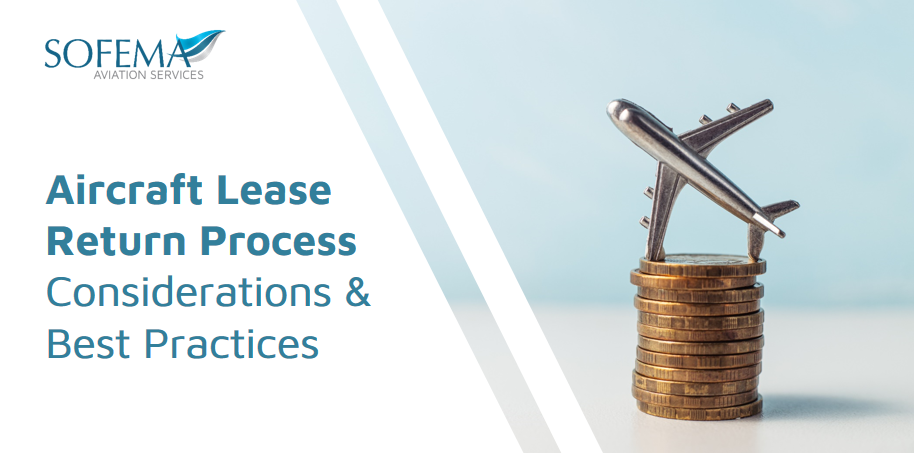Sofema Aviation Services (SAS) www.sassofia.com considers best practices related to the development of a Lease Return Plan
Introduction
Over 13,000 large aircraft operating in 2021 are under a lease agreement and as such is subject to the requirements of the lease agreement.
The Lease Agreement contains provisions related to the termination and return of the aircraft.
Abstract. It is an important process and one which is understood in detail by the lease company and often overlooked by the lessee. (often at a great cost!)
A typical redelivery obligation is for the aircraft to be capable of operating without requiring major maintenance. (usually for a period equal to 1 “C” check)
What happens during lease return?
- Inspection of the Aircraft and Associated Documentation
o To ensure & confirm that the lessee has fulfilled all Continuing Airworthiness and “other” documented obligations.
o To ensure the aircraft return complies with all redelivery conditions described in the lease.
Aircraft Lease Return Process Considerations
The aircraft redelivery “will be” a (potentially expensive) and time-consuming burdensome period. It is for this reason that ensuring a well-organized and systematic process is essential to try to reduce both the “pain” and unnecessary cost burden.
Financial Considerations
- The physical elements of the actual aircraft can lead to significant penalties.
- The correctness of the aircraft technical records can often have financial significance so may also become contentious during discussions.
- Performance requirements (for example EGT Margin) shall meet the lease obligations – major costs could be implicated in this area even requiring an engine shop visit (ESV).
- The aircraft must be certification criteria (For example STC not certified under an EASA / FAA bi-lateral will not allow an aircraft to be certified within Europe or North America.
- Certification requirements, the focus being to ensure compliance with local regulatory authority requirements and, where cross-border transfers are concerned, compliance with the next lessee’s regulatory requirements.
Key Issues which can impact a successful lease return
- The aircraft physical inspection process usually takes many hours to complete is potentially subjective and can create stress where the aircraft is required for the next client and frustration where there is no “next customer” waiting for the aircraft.
- Correlation between dent & buckle physical status of the aircraft and the document records and repair records.
- All damaged to be assessed for compliance with the SRM, it is important to ensure the correct classification.
- Borescope inspections can be something of an unknown with the potential for out-of-limit findings – borescope at least months in advance to gain confidence (not a guarantee) however may help to avoid a costly delay due to an borescope failure.
Next Steps
Check out the Forthcoming Training Session at this link
Dates & Place: 6 December to 10 December 2021 WYNNS HOTEL Dublin
Included Courses:
Managing Aircraft Lease Agreements and Maintenance Reserves – 3 Days, Dublin, Ireland
Technical Records for Aircraft Lease Management – 2 Days – Dublin, Ireland
Email team@sassofia.com to ask for Early Bird and Multi Delegate Discount
Tags:
aviation, Aviation Training, EASA regulations, Aircraft Technical Records, Dublin training session, Aircraft Lease agreements, Aircraft Lease Returns, Aircraft Redelivery, Aircraft Lease Redelivery, Aircraft Leasing, SAS blogs, SAS training, Lease Return




